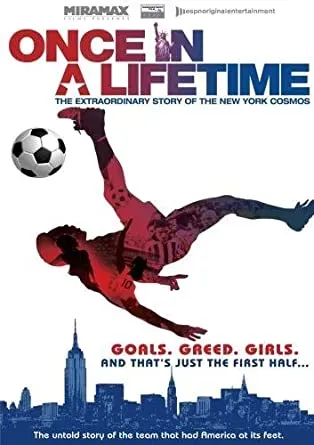Soccer is one of the simplest sports there is. Kick the ball into the goal, score one point at a time, and don’t touch the ball with your hands. There are some more nuanced laws of the game, but overall the sport is fairly straightforward and simple. So the rules should be the same everywhere soccer is played, right? Well, not exactly.
Breaking the rules: soccer in America
You can’t talk about variant soccer rules without mentioning what we Yanks have tried to do with the sport over the years.
Other codes that stemmed from the sport, both here and abroad, like rugby, Australian rules, and American football, essentially eventually became entirely different games.
But here in the States, we’ve tried to “Americanize” soccer itself on more than one occasion.
Thinking the sport was too dull for American audiences, several rule changes were attempted to spice up the game. In the original NASL, the offside line was a new marking on the field 35 yards from goal. This was instead of the traditional midfield boundary where players could traditionally be considered offside.
They also did not have games end in ties. Instead, all matches tied at the end of regular time went to a shootout.
But not a standard spot-kick shootout. Instead, the NASL had players run up towards the keeper, similar to hockey shootouts. The keeper could come off his line, too. The shootout started from the 35-yard line, having to get off a shot before a shot clock expired.

In addition, the NASL utilized a countdown clock instead of the traditional upwards-moving time system.
An unusual points system was also adopted. Teams would get bonus points for goals scored each game, in addition to points for wins. Sometimes as many as six points for wins were given out.
In the 1990s, MLS initially carried over some of these rule changes, but eventually got rid of the quirks and now aligns much closer to the traditional game.
A big soccer rule not followed in America
While it’s not a rule about the 90-minute game itself, one big FIFA rule that has never been implemented in the USA is the use of promotion and relegation to determine which teams play in which division. Most league systems in the world utilize some variation of this mechanism.
Soccer is not the same everywhere
While most leagues today utilize an almost identical set of soccer rules, sometimes you will see slight variations from league to league.
Especially in lower divisions or youth leagues, you can see adjustments to how long games are, how games are settled, and so on.
Some leagues allow more or less substitutes during games. Occasionally hockey-style on-the-fly and unlimited subs are allowed. The “sin-bin” or “yellow card+” is a rule that has also been trialed. For not-quite-red-card offenses, a player can be sent off for 10 minutes and then return to the game. This is similar to the rugby rule or a hockey power play.
Notably, American high school and college soccer still use a countdown clock that stops when the ball goes out of play. Games end with a loud horn at 0:00 like other American sports, with no added injury time.
MLS NEXT Pro, the MLS third division reserve league, does not have ties and settles regular season games with a penalty shootout if needed. Concussion substitutes are allowed, and red card suspensions are served by the player only during the next game versus the same opponent.
And of course, the modern game features differences in how games are officiated. Most major leagues now include the use of VAR, the video assistant referee. There are also semi-automated offsides and goal checks. But smaller leagues that don’t have the right infrastructure (or budget) for this technology don’t use the systems.















